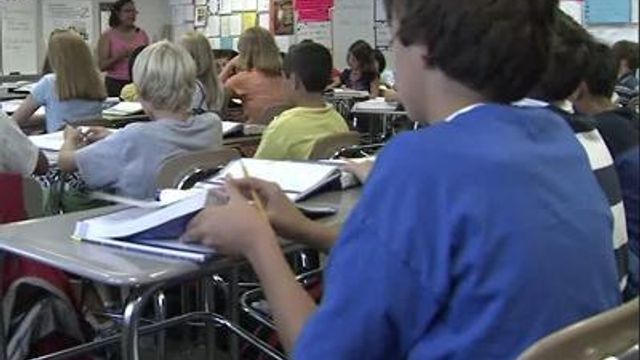Test scores show N.C. students meeting expectations
More of North Carolina’s public schools met or exceeded expectations on standardized tests compared to the year before, and fewer schools received the lowest-performing label, state education officials announced Thursday.
Posted — UpdatedThe annual ABCs of Public Education report, based on results of end-of-grade and end-of-course tests taken in grades 3 through 12, show 88 percent of nearly 2,500 schools that were scored met academic growth goals for the 2009-10 year, compared with 81 percent in 2008-09.
Test scores got a boost in part because results now include scores for students who retook end-of-course exams for high school classes because they failed the first time around, said Lou Fabrizio, the chief testing director for the Department of Public Instruction. A similar increase occurred when retest results were included for lower-grade tests for the first time a year ago.
The ABCs program, which began in 1996, also historically has determined whether teachers at schools that are making progress on test scores would get bonuses. But that cash hasn’t been offered the last two years by the Legislature during the extended budget crisis.
Education leaders praised the results and said they reflect an increasing percentage of students with passing grades on reading and math test scores since 2007, after higher standards were implemented.
In a separate report Thursday, the public schools reported the number of ninth-graders graduating within five years is now near 75 percent, compared to around 70 percent three years ago.
“North Carolina schools are making progress in the face of economic and resource challenges, and I am proud of our schools and I’m proud of the work that goes on in the classrooms,” Superintendent of Public Instruction June Atkinson said at a news conference.
The ABCs report said 931 schools, or more than 37 percent, received the highest honors, meaning at least 80 percent of students passed the tests and the schools reached growth expectations in the scores. A year ago, 627 schools reached those three highest achievement levels, or more than 25 percent.
Only 16 schools were designated as “low performing,” compared with 75 a year ago. Those schools, where more than half of the students failed the tests and didn’t meet growth expectations, can get special assistance from the state. Four of the 16 are located in the Halifax County district, which is already under intense state scrutiny for poor student performance.
The exams also serve as the basis for determining whether schools meet requirements under the federal No Child Left Behind law. Fifty-seven percent of the schools met all of the federal testing standards this year compared to 71 percent a year ago, the report said.
Fabrizio said last year’s retesting changes probably contributed to why fewer schools met federal expectations this year. Atkinson said more analysis is needed.
The federal requirements are usually all-or-nothing. Missing just one of the benchmarks for a subgroup of students — which 15 percent of all schools did — can mean the school doesn’t make “adequate yearly progress.” Schools that receive certain federal funds to help disadvantaged children and don’t meet benchmarks two years in a row face sanctions.
Atkinson said improvements are needed to boost success rates for at-risk students, possibly by offering children in early grades longer school days and school calendars.
The state education department said 200 schools received its top label of “Honor School of Excellence” because more than 90 percent of students passed tests and the schools reached the federal benchmarks. There were about 120 such schools a year ago.
The four-year graduation rate is now 74.2 percent and five-year rate is 74.7 percent, the department said. A year ago, it was 71.8 percent for four years and 72.9 percent for five. Atkinson said more work is needed to improve graduation rates among some groups of students. Rates for black students and Hispanics, for example, still trail well behind the average.
Copyright 2024 by WRAL.com and the Associated Press. All rights reserved. This material may not be published, broadcast, rewritten or redistributed.





